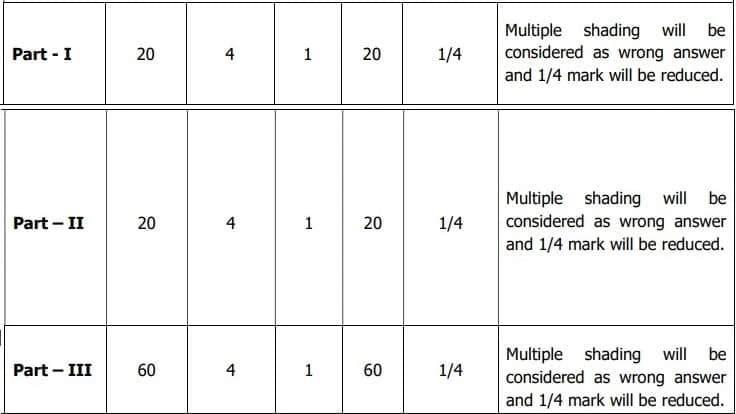TANCET Electrical and Electronics Engineering Syllabus PDF:
Anna University, Chennai has officially announced the Common Engineering Entrance Test and Admission (CEETA-PG – 2024)on behalf of the Government of Tamil Nadu. Candidates are interested in M.E./M.Tech./M.Arch./M.Plan. Degree Programmes offered at university departments, and constituent colleges of Anna University can check the official notification and apply till 07-02-2024. Here we uploaded the TANCET Electrical and Electronics Engineering Syllabus, Model Question Paper with answers in PDF, and Exam Pattern, and the same is given below. Candidates who took the CEETA-PG Entrance Exam can check the complete EEE syllabus and Exam Pattern along with the question paper below. Check the TANCET EEE Syllabus PDF below:
Important dates of CEETA-PG 2024:
- Starting date for Online Registration: 10-01-2024
- Last date for Online Registration: 07-02-2024
- Downloading of Hall Ticket: 25-02-2024 (Tentative)
- Date of M.E./M.Tech./M.Arch./M.Plan Exam: 10-03-2024 10 AM to 12 PM (Sunday)
To see and check the complete CEETA-PG Exam 2024 notification and important details, check the link – TN CEETA PG 2024
For those looking for the TANCET EEE Previous Year Question Papers PDF, Check the link – TANCET EEE Question Papers PDF
TANCET EEE Syllabus & Exam Pattern:
TANCET Electrical and Electronics Engineering M.E/M. Tech entrance exam consists of three Parts
- Part I: Engineering Mathematics – (Common to all candidates)
- Part II: Basic Engineering & Science – (Common to all candidates)
- Part III: Department Paper
Check the complete syllabus is updated below:
For the complete TANCET Syllabus 2024 PDF, Check the link – CEETA-PG Electrical and Electronics Engg. Syllabus PDF
Electrical and Electronics Engineering Syllabus – M.E/M.Tech:
PART – I Engineering Mathematics (Common to all Candidates)
– Determinants and Matrices:
– Calculus and Differential Equations:
– Vector Calculus:
– Functions of Complex Variables and Complex Integration:
– Transforms:
– Numerical Methods:
– Applied Probability:
Part – II Basic Engineering & Science – (Common to all candidates)
– Applied Mechanics:
– Mechanical Engineering:
– Physics:
– Material Science:
– Civil Engineering:
– Electrical Engineering:
– Computers:
– Chemistry:
Part – III Electrical and Electronics Engineering
Electrical Circuits and Fields: KCL, KVL, Nodal & Mesh analysis, transient response of D.C and A.C networks; sinusoidal steady-state analysis; resonance in electrical circuits; concepts of ideal voltage and current sources, network theorems, driving point admittance and transfer functions of two port network, three-phase circuits; Fourier series and its application; Gauss theorem, electric field intensity and potential due to point, line plane and spherical charge distribution, dielectric, capacitance calculations for simple configurations; Ampere’s and Biot-Savart’ law, inductance calculations for simple configurations.
Electrical Machines: Single phase transformer – equivalent circuit, phasor diagram, tests, regulation and efficiency; three-phase transformer –connections; autotransformer; principles of energy conversion, windings of rotating machines; D.C generators and motors-characteristics, starting and speed control, armature reaction and communication: three phase induction motors-performance characteristics, starting and speed control; single-phase induction motors; synchronous generators – performance, regulation; synchronous motors – starting characteristics, applications, synchronous condensers; fractional horsepower motors: permanent magnet and stepper motors.
Power Systems: Electric power generation – thermal, hydro, nuclear; transmission line parameters; steady–state performance of overhead transmission lines and cables and surge propagation; distribution system, insulators, bundle conductors, corona and radio interferences effects; per-unit quantities; bus admittance and impedance matrices; load flow; voltage control and power factor correction; economic operation; symmetrical components, analysis of symmetrical and unsymmetrical faults; the principle of overcurrent, differential and distance protection; concepts and solid state relays and digital protection; circuit breakers; principles of system stability –swing curves and equal area criterion; HVDC system – Principle of operation, control and design consideration, HVDC circuit breaking; FACTS – Reactive power control, Uncompensated transmission line, Series compensation, SVC, thyristor control, series capacitor, static synchronous compensator, UPFC, and applications.
Control Systems: Principles of feedback; transfer function; block diagram; steady–state errors; stability-Routh and Nyquist criteria; Bode plots; compensation; root loci; elementary state variable formulation; state transition matrix and response for Linear time Invariant systems.
Power Electronics and Drives: Semiconductor power devices-diodes, transistors, thyristors, triacs, GTO, MOSFETs, and IGBTs-static characteristics and principles of operation; triggering circuits; phase control rectifiers; bridge converters-fully controlled and half controlled; principles of choppers and inverters, basic concepts of adjustable speed dc and ac drives.
Microprocessor and Microcontrollers:
Microprocessor: General 8-bit microprocessor Architecture8085, 8086 processor – Architecture, Memory, I/O interfacing, Instruction set, Addressing modes, Timing diagram & delays, Machine cycles, Interrupts, counters, Assembly language programming.
Microcontrollers: 8-bit microcontroller -8051 architecture, bus configuration, Instruction sets, programming & applications.
Digital Signal Processing: Analog signals – sampling & Aliasing- Discrete-time signals & systems – LTI systems – Convolution sum-Difference equation representation-Z Transform & its Inverse – Discrete Fourier series & Fourier transform- Radix 2 FFT – Decimation in me and frequency – Inverse DFT using FFT – Analog Butterworth & Chebyshev filter design –IIR & FIR filter design and Realization.
High Voltage Engineering: Causes of overvoltages and its effects on power system – Lightning, switching surges and temporary overvoltages – concepts of reflections and refraction of travelling waves. Dielectric breakdown- Gaseous breakdown – Vacuum breakdown, Corona discharges – Generation of high voltage, High current and its measurements – DC, AC, impulse voltages and currents; High Resistance with series ammeter – Dividers, Resistance, Capacitance and Mixed dividers – Peak Voltmeter, CVT, Electrostatic Voltmeters – Sphere Gaps – High current shunts; High voltage testing of electrical power apparatus as per International and Indian standards – Insulation Coordination.
Electric energy – Conservation and utilization: Fundamentals of Electric drives – choice and applications; traction motors – characteristic features – electric braking train movement and energy consumption; Design of illumination systems and various lighting schemes; Electric heating – methods of electric heating and its types – Electric welding – Principles of the conversion of solar radiation into heat; Solar Collectors-flat-plate collectors – concentrating collector – cylindrical parabolic; Wind energy conversion system – basic principles – site selection – basic components – Classification of WECS – Types of wind machines.
For the complete TANCET Syllabus PDF 2023 Check the link – CEETA-PG EEE Syllabus PDF


